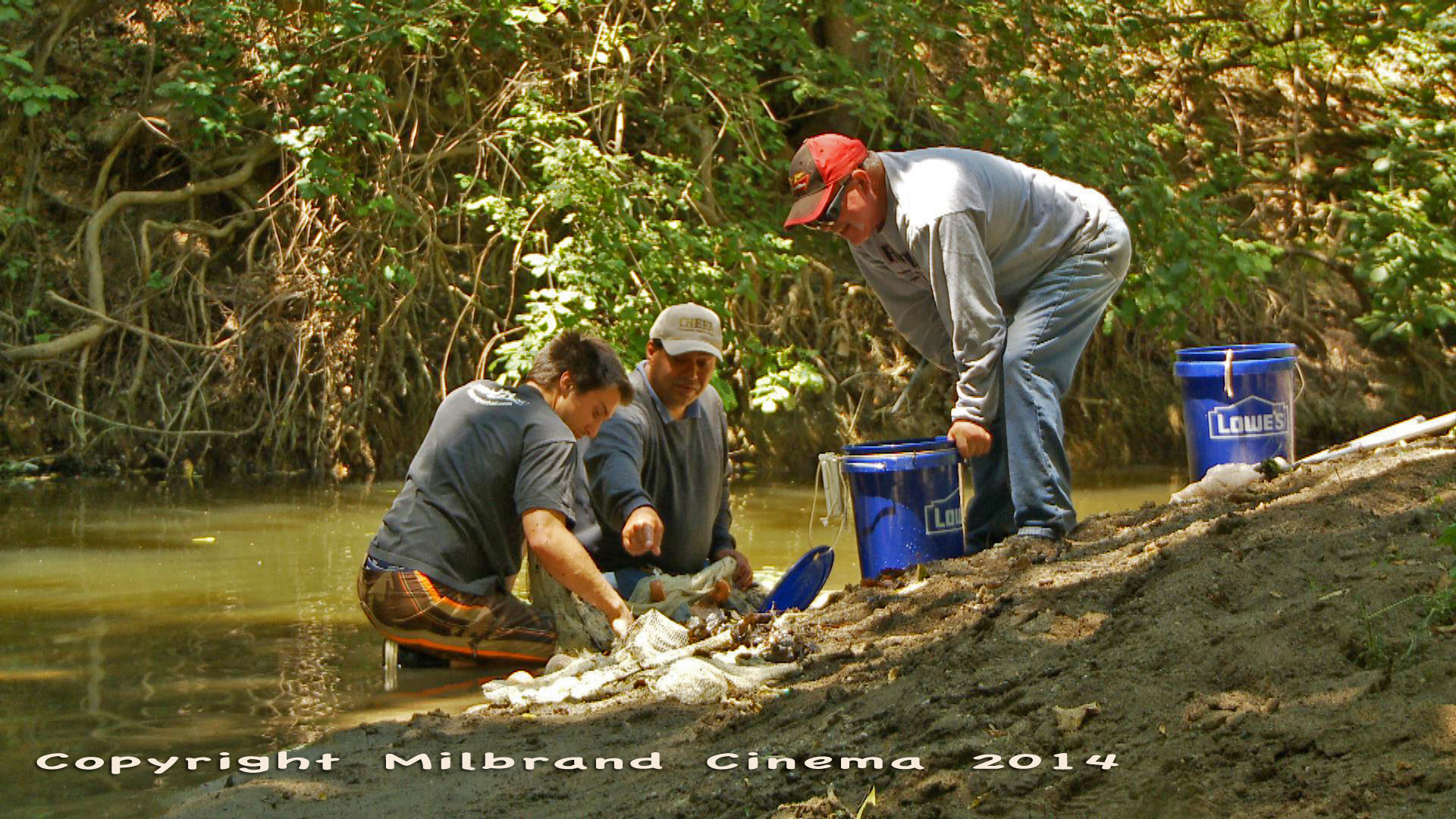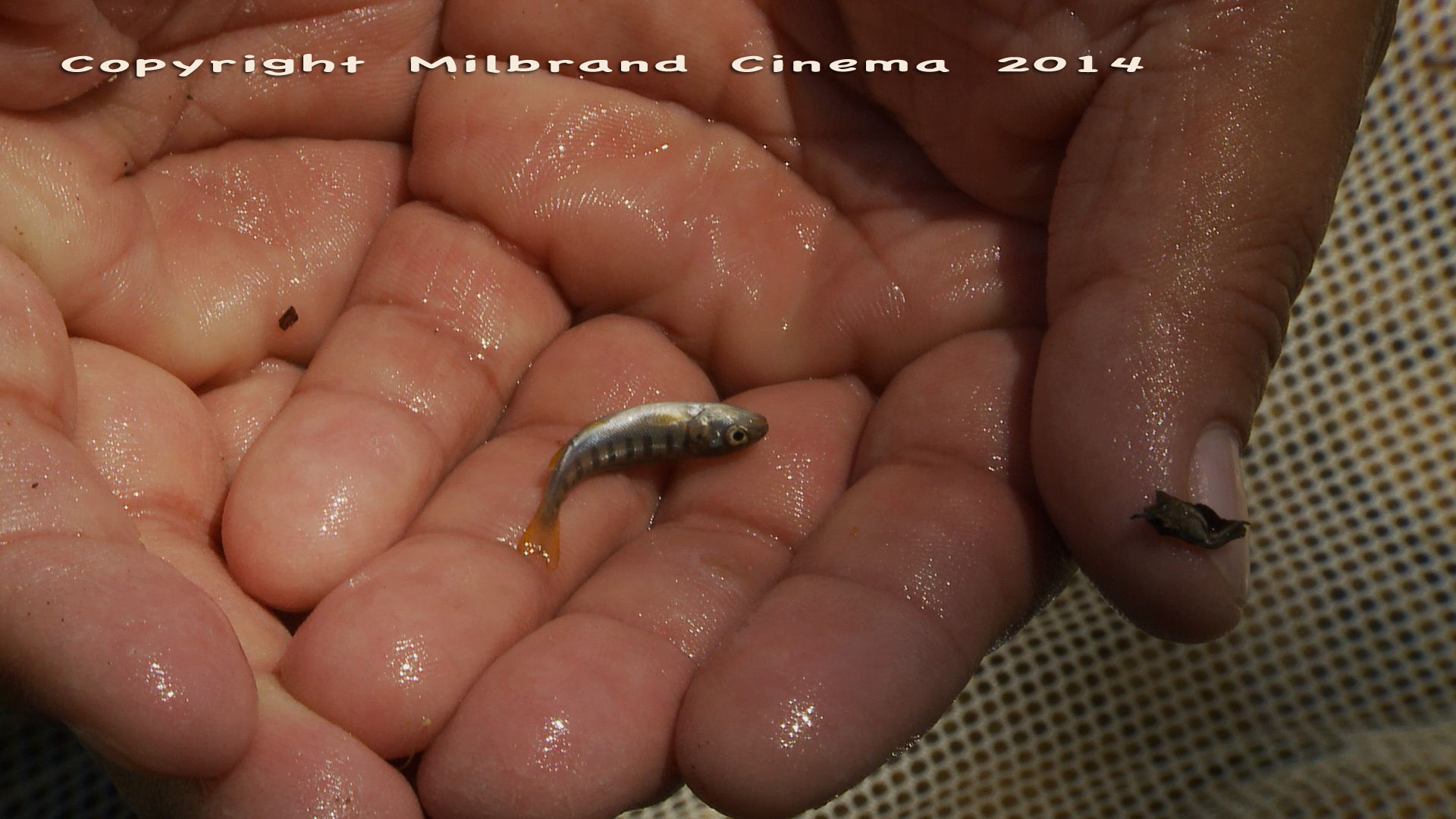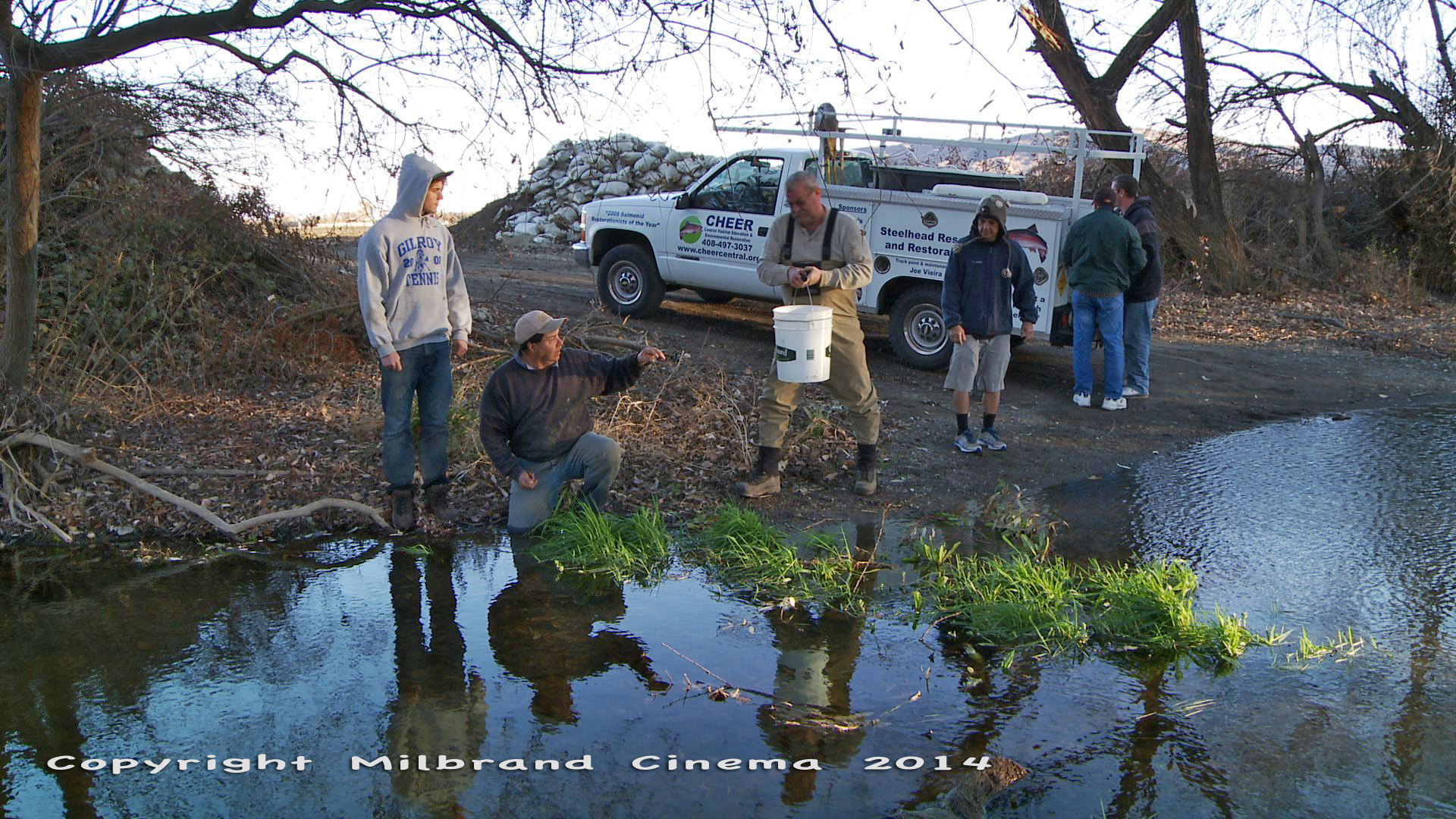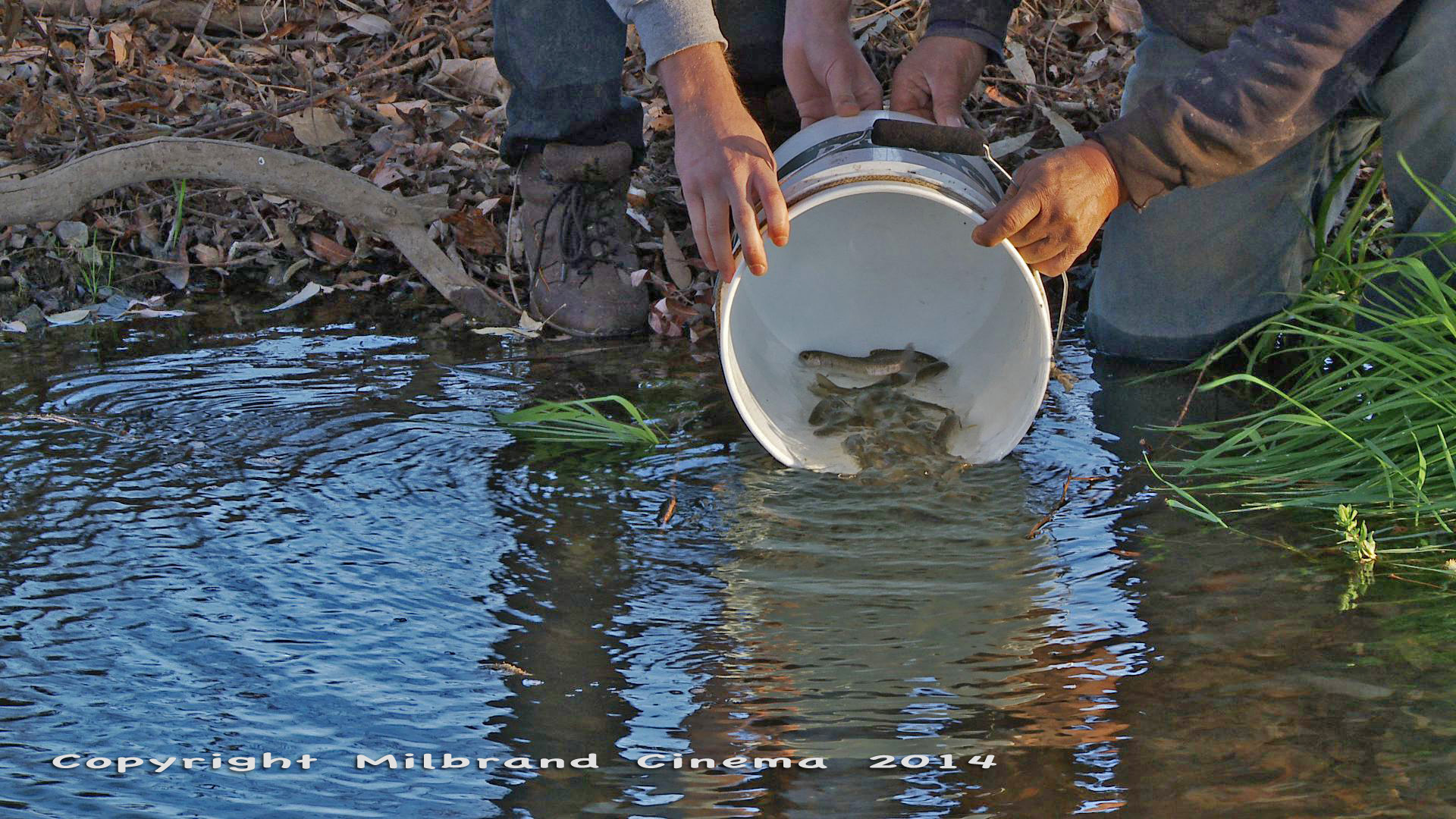Ever since I worked on my steelhead movie for NOAA, NMFS in Long Beach, I have been fascinated with the California creek ecosystem and steelhead trout. Steelhead, (Oncorhynchus mykiss) could tell a very interesting story about their life, if only they could talk.
Adults deposit eggs and milt in gravel within creeks and rivers that have fast moving water. Fish swim up the river during the Winter and Spring and the eggs hatch in the Spring and Summer. Some fish remain in these creeks their entire lives and become rainbow trout while others migrate to the ocean and live at sea until they are ready to return to their natal stream to spawn. Unlike all other types of salmon that die after spawning, ocean-going steelhead can spawn more than once and over the course of many years they migrate up and down a river, much like people traveling along freeways.
Steelhead migrate up the river during and right after big winter storms, while the water levels are high. Throughout their travels they have to avoid manmade hazards and swim dozens of miles until they reach proper spawning grounds that have just the right size spawning gravel and shaded trees that will drop insects to feed their young. Some fish spawn right away and head directly back to sea while others stick around for a while. In times of sufficient rainfall, dams release water into creeks via their spillways but during times of low rainfall and drought, they release less and less water. As seasons change from spring to summer the creek water levels evaporate. Farmers need more water for their crops and drop by drop many of the creeks become too shallow to support fish and sometimes go bone-dry. During these times the adult fish that stuck around and the young of the year all run into trouble. Now that I live up here in the Central Coast, I have a great opportunity to observe steelhead up close. After moving, I found out about a non-profit organization called CHEER, which stands for Coastal Habitat Education and Environmental Restoration. CHEER’s president Herman Garcia, his board and dozens of volunteers work along creeks in Gilroy and the Pajaro Watershed to rescue steelhead. The fish swim from the Monterey Bay National Marine Sanctuary, up the Pajoro River through heavy agriculture land and then up Uvas Creek to connect with spawning grounds. Before the dam was built in the 1950’s, the steelhead swam in the upper Uvas watershed to spawn. Now the fish settle for Uvas Creek and her tributaries below the dam. At least this area has spots the fish find suitable for spawning.
Most of the CHEER volunteers are fishermen who have come to the realization that if they do not do volunteer during seasonal creek dry backs, they may not be able to catch and release a steelhead in their hometown.

 These fish need saving!
These fish need saving!
Steelhead are considered “threatened” and protected by Federal regulatory law. Oftentimes the government finds it difficult to gain access to the fish and that is where CHEER comes in. Not everyone is thrilled to have an endangered species on their property, but thankfully Herman Garcia is a natural born communicator who can educate people to appreciate what they have, and the benefits of preserving a species.
Steelhead problems do not only happen in Gilroy, they are statewide. Herman advises councils like the Mid-peninsula Regional Open Space District, the County of Santa Clara, County of Santa Cruz, towns of San Jose and Palo Alto on what to do when they have a fish dilemma.
 It could be something as simple as rescuing fish during dry backs or more complex like pinpointing sources of water pollution, or trying to find solutions to the homeless encampments that are attracted to life along the watershed. CHEER does what NOAA and the California Department of Fish and Wildlife (CDFW) have trouble doing, connecting directly with landowners on a regular basis. With the CHEER team working closely with CDFW, thousands of fish have been saved since 1996. CHEER has a slogan that says “No Fish Left Behind” and they stand by their motto. Rescued fish are moved to an area of the watershed that is less likely to dry up. When the winter rains return and the creeks and rivers once again fill with water, reconnecting to the sea, the cycle of life continues…
It could be something as simple as rescuing fish during dry backs or more complex like pinpointing sources of water pollution, or trying to find solutions to the homeless encampments that are attracted to life along the watershed. CHEER does what NOAA and the California Department of Fish and Wildlife (CDFW) have trouble doing, connecting directly with landowners on a regular basis. With the CHEER team working closely with CDFW, thousands of fish have been saved since 1996. CHEER has a slogan that says “No Fish Left Behind” and they stand by their motto. Rescued fish are moved to an area of the watershed that is less likely to dry up. When the winter rains return and the creeks and rivers once again fill with water, reconnecting to the sea, the cycle of life continues…
 Long Live the Steelhead!
Long Live the Steelhead!

